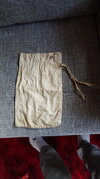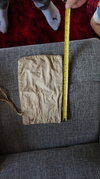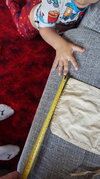When I built my replica SAS desert jeep I just had to make some replica Lewes Bombs like their 2IC John "Jock" Lewes invented. A combination HE and incendiary in a small package. The Army did not have anything like that. The initial role of the SAS was sabotage attacks at night on enemy aircraft on the ground, using time bombs placed above the gas tanks. An explosion that could light the gas - high speed HE won't reliably do that if at all - was the objective so the plane would burn up. So I learned how they made them. I had to find some time pencils. This took me down the path of learning who made them, and other gadgets.
The result so far is this educational display, which I did for the second time at a large annual military vehicle show and swap meet in California. I showed WWIIBuff these pictures yesterday and this is the first time to a wider audience. I am more of a storyteller than a collector. Nothing like the many serious collectors of original items who frequent this website. Many of these items are reproductions. Nearly all attendees at shows like this, which is a militaria show as much as a vehicle show, had never seen things like these. It is not like a pure militaria table show with many serious collections and displays. In California, USA, very few collectors are into British things. So I have the pleasure of telling the stories about SOE, MD1, SAS, and other behind the lines units during WW2, to many people who know little about the subjects.
The next time I do the display I will have labels next to everything. I was missing some things because I forgot to pack the Italian mountaineering rucksack I stow in the jeep, that carries some imitation HE and gadgets. Like my Lewes Bombs. An SAS NCO procured a lot of these rucksacks, which they found to be the perfect size for carrying 12-15 bombs.
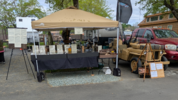
I forgot my No. 1 MD1 pull switch and think I have a Percussion Ignitor somewhere. I am looking for a No. 7 Pull/Pressure switch, a No. 8 Pressure "debollocker", and a No. 12 Release Switch would be nice.
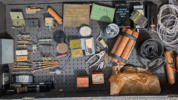
I made the HE cartridges when I thought PE2 was 1 3/8 inch diameter but I think 1 1/4" is right. Correct? So I will re-do them. I would like to purchase a power supply for a MCR 1 receiver.
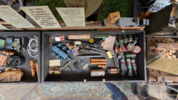
I made the Cordtex and don't know if I got the early lead-colored color right. I read that it was a lead tube with TNT filling. Poured in I assume. Later it was PETN in a plastic tube I think. I need a couple extension rods for those No. 5 SOE pressure switches. I have a complete one on my train derailment display, a postwar switch. See the pics.
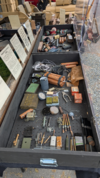
That is a 1945 Signaling Beacon, 12 volt, between the derailment setup and the guns. Someday I'd like to set up an SAS DZ/resupply display with mannequin, the lamp, maybe an S-phone if I can find one. Eureka beacon is on the wish list.
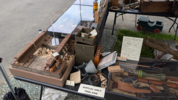
If you can zoom you can read the explosives summary. This is for the explosives geek. I found a few at the show. I am not sure I got all my facts straight. I think people liked knowing some of the ordnance that used these chemicals.
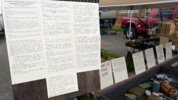
The next couple pics were from last year, before I put cut down spikes on the rails. By the way this equipment is an old U.S. type with rail plates and spikes. I think the continental rails in the 1940s were bolted, right? These rails are called 60 pound. That is for three feet. Mine are 25 inches long, I think the bare minimum length to fit everything on it. The crude little signs say how many feet apart the things should be. I put two different charges on each rail, for variety, with fog signal on the front one and a No. 5 switch on the back one. It's 1950s color blends in with the ballast. I'd rather use the green one if I had a green extension rod.
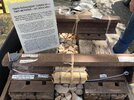
I am not sure if a half pound TNT block would be right for rails of this size. Maybe 12 ounces of 808 would be better?
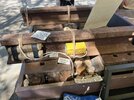
The made up charge I forgot to bring last week is on the right.
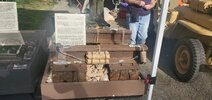
An airborne petrol can is under the table. Made to fit C containers.
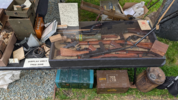
I am signed up to do this display with the jeep at a nice militaria show in Pomona, CA in June but not sure I want to deal with the travel expenses and long drive. California is a long state. But I'd like to meet WWIIBuff who I think will be there.
That's about it.
John in Northern California, USA
The result so far is this educational display, which I did for the second time at a large annual military vehicle show and swap meet in California. I showed WWIIBuff these pictures yesterday and this is the first time to a wider audience. I am more of a storyteller than a collector. Nothing like the many serious collectors of original items who frequent this website. Many of these items are reproductions. Nearly all attendees at shows like this, which is a militaria show as much as a vehicle show, had never seen things like these. It is not like a pure militaria table show with many serious collections and displays. In California, USA, very few collectors are into British things. So I have the pleasure of telling the stories about SOE, MD1, SAS, and other behind the lines units during WW2, to many people who know little about the subjects.
The next time I do the display I will have labels next to everything. I was missing some things because I forgot to pack the Italian mountaineering rucksack I stow in the jeep, that carries some imitation HE and gadgets. Like my Lewes Bombs. An SAS NCO procured a lot of these rucksacks, which they found to be the perfect size for carrying 12-15 bombs.

I forgot my No. 1 MD1 pull switch and think I have a Percussion Ignitor somewhere. I am looking for a No. 7 Pull/Pressure switch, a No. 8 Pressure "debollocker", and a No. 12 Release Switch would be nice.

I made the HE cartridges when I thought PE2 was 1 3/8 inch diameter but I think 1 1/4" is right. Correct? So I will re-do them. I would like to purchase a power supply for a MCR 1 receiver.

I made the Cordtex and don't know if I got the early lead-colored color right. I read that it was a lead tube with TNT filling. Poured in I assume. Later it was PETN in a plastic tube I think. I need a couple extension rods for those No. 5 SOE pressure switches. I have a complete one on my train derailment display, a postwar switch. See the pics.

That is a 1945 Signaling Beacon, 12 volt, between the derailment setup and the guns. Someday I'd like to set up an SAS DZ/resupply display with mannequin, the lamp, maybe an S-phone if I can find one. Eureka beacon is on the wish list.

If you can zoom you can read the explosives summary. This is for the explosives geek. I found a few at the show. I am not sure I got all my facts straight. I think people liked knowing some of the ordnance that used these chemicals.

The next couple pics were from last year, before I put cut down spikes on the rails. By the way this equipment is an old U.S. type with rail plates and spikes. I think the continental rails in the 1940s were bolted, right? These rails are called 60 pound. That is for three feet. Mine are 25 inches long, I think the bare minimum length to fit everything on it. The crude little signs say how many feet apart the things should be. I put two different charges on each rail, for variety, with fog signal on the front one and a No. 5 switch on the back one. It's 1950s color blends in with the ballast. I'd rather use the green one if I had a green extension rod.

I am not sure if a half pound TNT block would be right for rails of this size. Maybe 12 ounces of 808 would be better?

The made up charge I forgot to bring last week is on the right.

An airborne petrol can is under the table. Made to fit C containers.

I am signed up to do this display with the jeep at a nice militaria show in Pomona, CA in June but not sure I want to deal with the travel expenses and long drive. California is a long state. But I'd like to meet WWIIBuff who I think will be there.
That's about it.
John in Northern California, USA

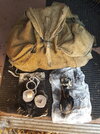
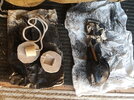
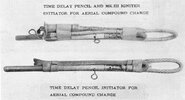
![Fog_Sectioned[1].jpg Fog_Sectioned[1].jpg](https://www.bocn.co.uk/data/attachments/179/179726-8aa5aa8fe792a2353af578f668179efd.jpg)
![Fog_Sectioned[2].jpg Fog_Sectioned[2].jpg](https://www.bocn.co.uk/data/attachments/179/179727-f26550f805ad612a92a3762c8e4652d0.jpg)
